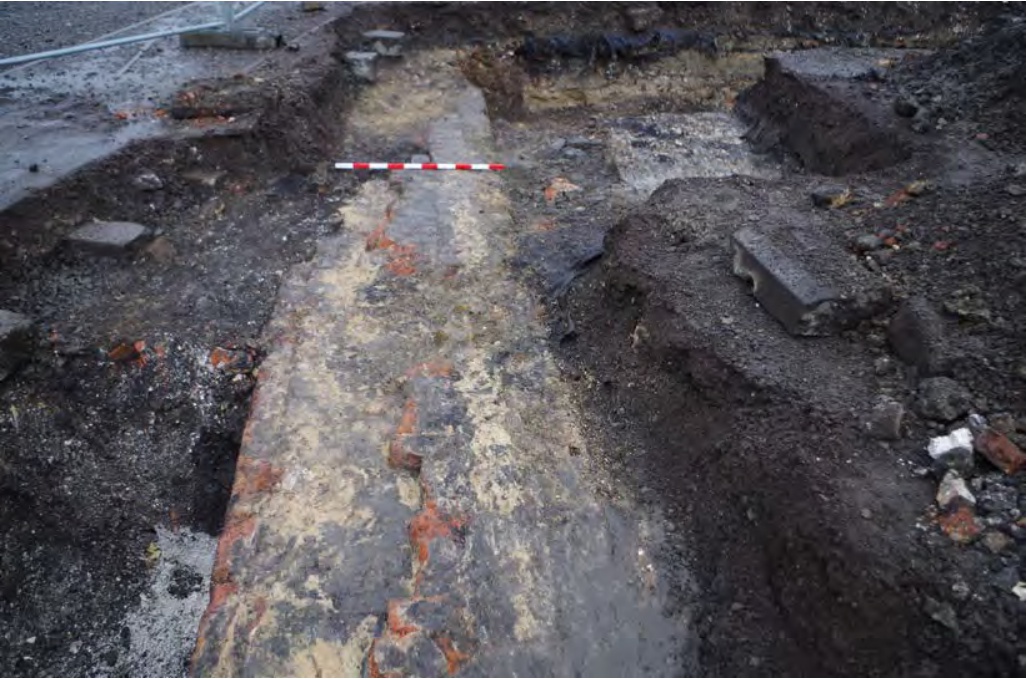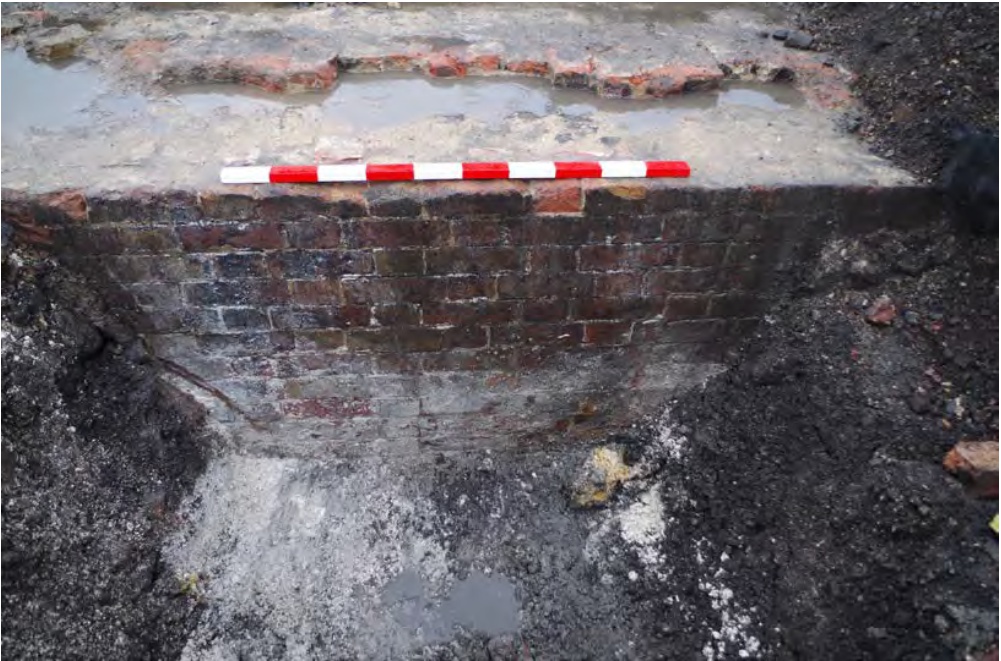We are working with the Chatham Historic Dockyard Trust (CHDT) as part of the ‘Command of the Oceans’ project; a major £8.75m Heritage Lottery Fund/HCA funded project to improve the current visitor facilities and provide more access to some of the historic features that are currently hidden at the site.
For the first phase David Britchfield from WA and Nigel Howard from CHDT excavated five test trenches targeting the 18th century South Mast Pond. The pond was used to store fir mast timbers under water, to keep them supple and to prevent them from drying out. Our aims were to determine the extent of the pond and to evaluate its condition, and the trenches produced some fascinating results.

The first trench, excavated on the eastern of the pond, provided part of the answer, locating its eastern brick revetment wall at a depth of only 30cm below the current surface of the Dockyard car park.
We carefully cleared an area around the wall, revealing a slight batter (angle) to its front face. Against its inner face there was redeposited chalk from the in-filling of the pond in the late 19th century; on the outside there were intact cobbled surfaces.

The most interesting finding was in a trench at the northern end of the pond. Not only did we again reveal the revetment wall, but also the timber foundations of the plank-seasoning house that was built over the mast pond in the 19th century. These foundations consisted of vertical piles supporting horizontal beams that were built into the pond wall and extended out above its northern edge (see image below).

Over the next few months WA will be assisting the Trust with a variety of investigations in the vicinity of both the mast pond, and the Mast House and Wheelwrights’ Shop to its immediate south. These will include the survey and interpretation of an assemblage of 18th century ship timbers, purported to be from the iconic sailing warship HMS Namur, prior to the development of a new visitor entrance on the site.
Throughout the summer we will be providing updates on all the latest results and finds as work develops on this exciting project.
For more details on the project click here.